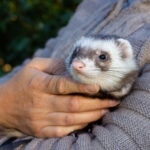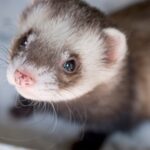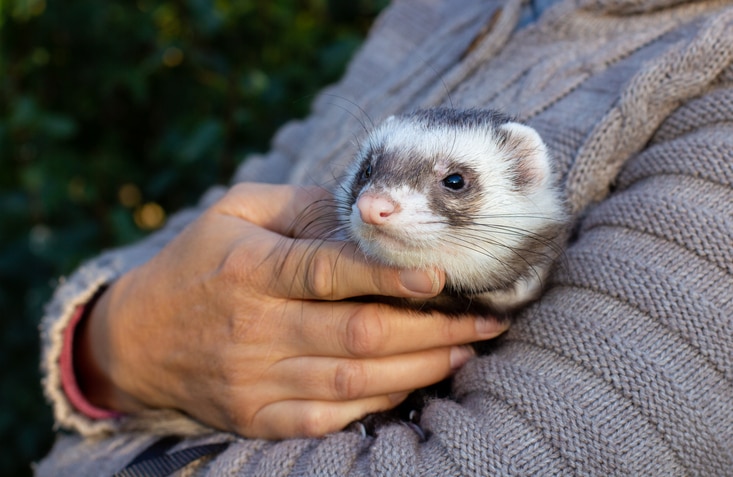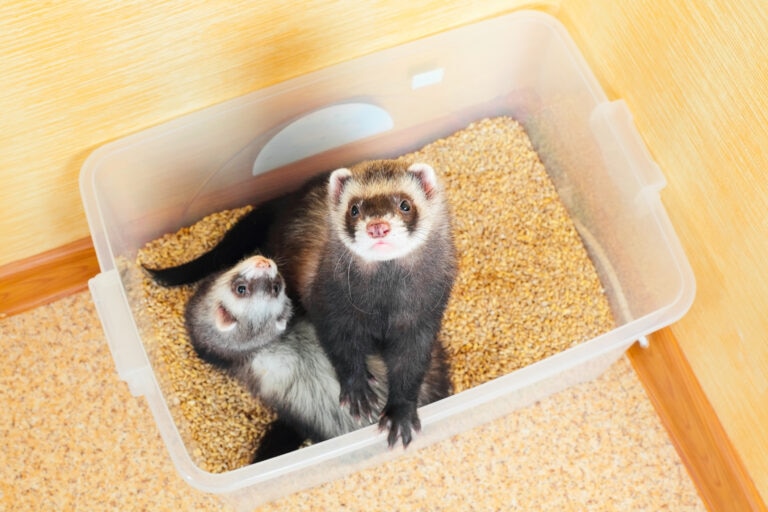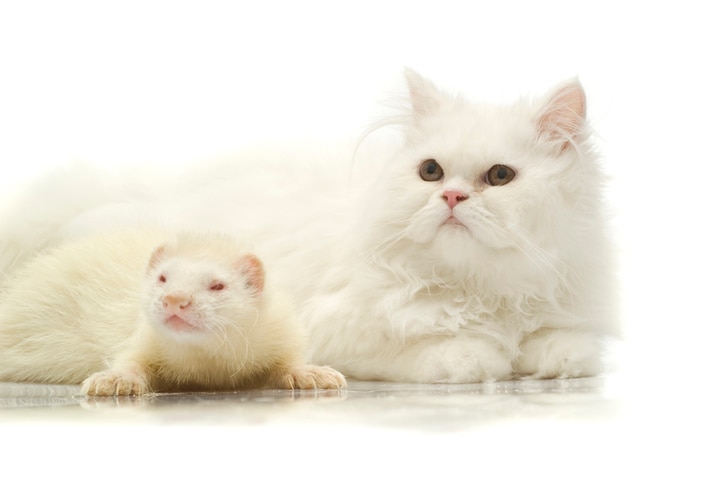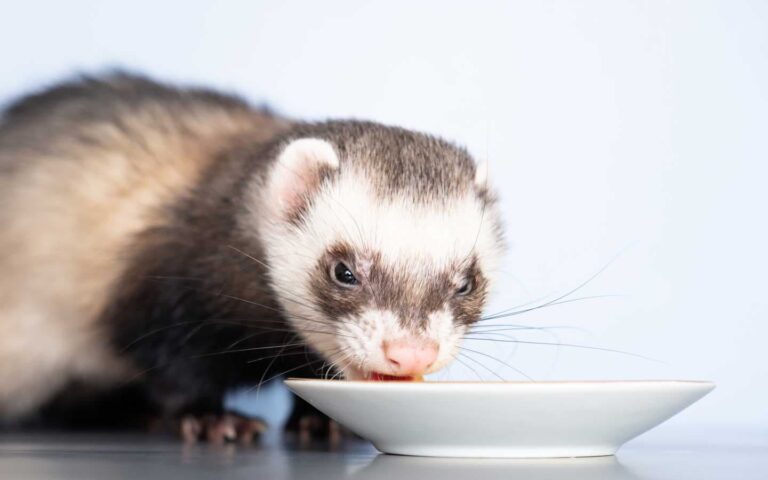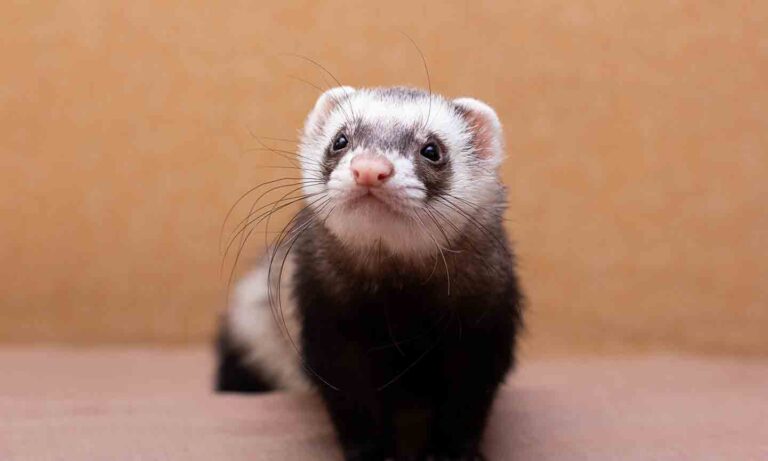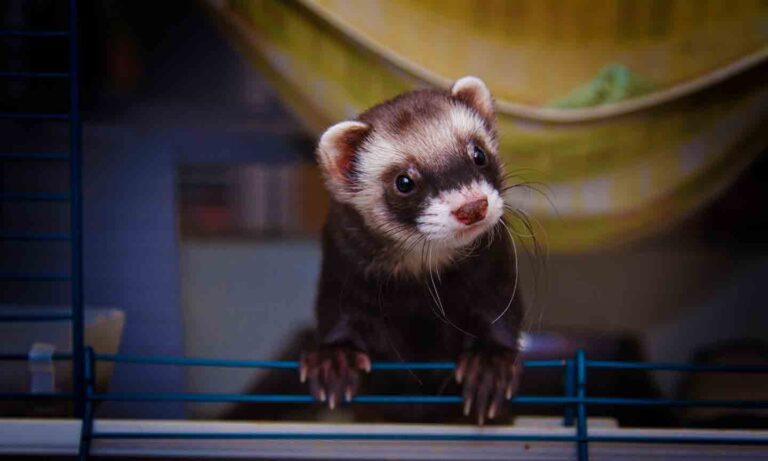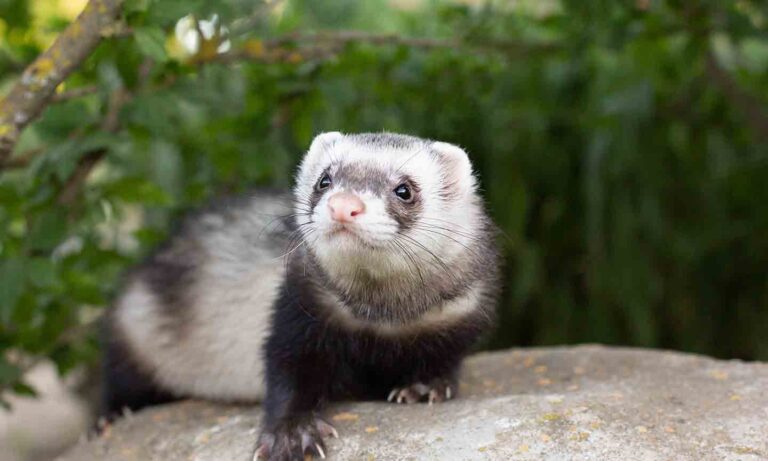Explore The Ferret Skeletal System
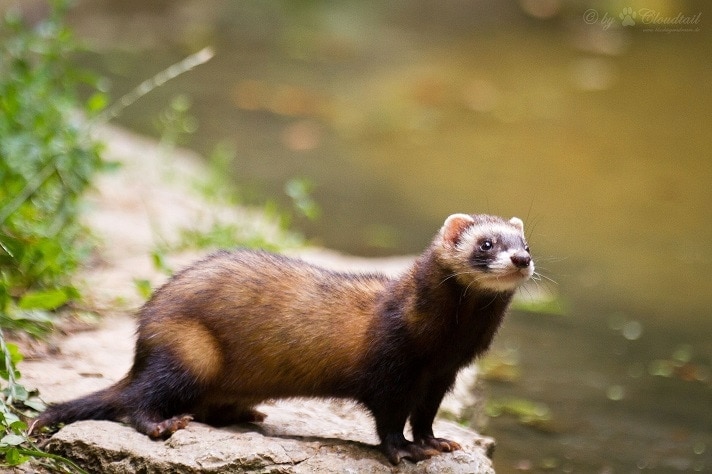
Photo by Cloudtail the Snow Leopard/Flickr
The ferret skeletal system is made up of roughly 200 bones. These bones are similar to most other mammals including humans, but there are some unique differences specific to ferrets.
The skeleton can be divided into three main parts. The axial skeleton is made up of the skull, vertebrae, ribs and sternum. The appendicular skeleton is made up of the bones of the front arms, rear legs, shoulders and pelvis. The heterotopic skeleton is made up of the kneecaps, the fabella in a tendon of the rear legs and, in males, the os penis.
The Uniqueness Of The Ferret Skeleton
In the adult ferret the individual bones of the skull are hard to tell apart because there are no fusion lines between the bones. The skull of the ferret is almost twice as long as it is wide, and the top of the skull is somewhat flat when compared to other mammals. The jaws are short and are almost impossible to dislocate. All of these adaptations make for a very strong bite, which is especially important for catching and eating prey animals. The brain case is rather large compared to the size of the skull.
The vertebral column of the ferret is also unique. The neck is quite long. The seven vertebrae in the neck are longer and bigger than the vertebrae of the chest. This gives the ferret a long neck when compared to its body size. The chest (thorax) usually has 15 vertebrae with paired ribs (30 total ribs); however, some ferrets only have 14 paired ribs. Some even have 14 ribs on one side and 15 on the other side. Normally the first 10 pairs of ribs attach to the sternum (chest bone), and the last five pairs join each other and form an arch. In some ferrets the last pair of ribs may be shorter than the rest and end in the muscles on the sides. This last rib is often palpable at the end of the rib cage. For comparison, humans have only 12 thoracic vertebras with 12 pairs of ribs.
The lumbar area (lower back) usually has six vertebrae, but there can be as few as five or as many as seven in some ferrets. The lumbar vertebrae generally get bigger in size from the first to the last one. The sacrum has three fused vertebras. The tail is composed of 18 vertebras that get smaller in size as they go toward the tip of the tail.
The tail is roughly one third of the length of the ferret body. Overall the vertebral column is long and very flexible, which allows a ferret to go into a narrow tunnel, do a U-turn and come back out.
The bones of the front arms are light and short. They also have a small diameter. The radius and ulna (forearm) are slightly bowed. The front paws have five clawed digits.
The nails are not retractable like cat nails are, so these need to be trimmed occasionally. The ferret walks on all five digits, which is different than dogs and cats.
The short, bowed arms and five claws are very good for digging.
The bones of the rear legs are also very light, but they are longer than the bones of the front arm. The femur (thigh bone) is long and straight, but the tibia (shin bone) is the longest bone of the leg. The knee joint is between the femur and tibia and is complicated. The knee has two menisci, cranial and caudal cruciate ligaments, and two collateral ligaments, which is very similar to the human knee. The five digits of the foot have non-retractable nails also. The ferret walks on all five digits of the rear paws.
The heterotopic skeleton is composed of the kneecaps, the fabella on the back of the femurs, and the os penis. The os penis, which is sometimes called a baculum, is a bone within the penis. It is almost 2 inches in length and can be used to estimate the age of an intact male ferret.
Ferret Skeletal Ailments
Ferrets are prone to some problems with their skeletal system. Sadly, chordomas are common in ferrets. A chordoma is a malignant cancer that commonly occurs at the tip of the tail. Chordomas resemble a clublike enlargement at the tip of the tail. They can also occur in vertebrae in any region of the spinal column.
Chordomas on the tip of the tail are treated by amputating the tip of the tail. In most cases amputation of the tail solves the problem; however, I had one case in which the ferret developed a second chordoma in the cervical vertebrae of the neck about one year after a tail chordoma was removed. Chordomas that develop in the spinal column (instead of the tail) are very hard to treat and may become fatal or require euthanasia.
Osteomas and osteosarcomas are cancers of the skeletal system that are occasionally seen in ferrets.
Osteomas are a benign cancer, which are mostly seen on the flat bones of the skull, jaw and ribs. Surgical removal is the treatment of choice when possible, but if the entire tumor is not removed then it will likely regrow with time.
Osteosarcomas are a malignant cancer of the long (humerus of the arm and tibia of the leg) or flat bones. Osteosarcomas are common in large breed dogs like rottweilers, but fortunately are rare in ferrets. Treatment includes amputating the arm or leg and/or chemotherapy for this type of cancer. Osteosarcomas can spread to other locations, especially to the lungs.
Younger ferrets commonly hurt themselves by jumping off of high places. When they land on their front arms they can dislocate their elbow or elbows.
An elbow dislocation is painful and usually causes lameness on the injured arm. A simple radiograph of the ferret’s elbow will verify the dislocation of the joint. Sometimes the dislocated elbow can be fixed by “popping” the elbow back into place while the ferret is under general anesthesia and using a SAM splint to allow enough scar tissue to stabilize the elbow, but most of the time it takes surgery to repair the injured elbow.
Knee injuries occasionally occur when the ferret’s foot gets stuck in a ramp while the ferret is going down it. The lower leg stops while the upper leg continues to go down hill, so the cranial cruciate ligament tears. This is very similar to the knee injury that athletes suffer while playing sports. This orthopedic problem usually requires surgery to repair, but some ferrets develop enough scar tissue with cage rest to stabilize the knee without surgery.
The bones of a ferret’s paws, arms and legs are very thin and light; therefore, accidental trauma induced fractures are also seen in ferrets. Most of these fractures can be repaired with surgery or with a splint, but some of the worse cases may require amputation of the limb to solve the problem.
The ferret skeletal system has some unique adaptations that gives a ferret its long, slender body with short limbs. The long and flexible vertebral column reduces the risk of disk injuries; however, ferrets are prone to chordomas of the vertebrae. The small bones of the limbs are also at risk for accident induced fractures.
